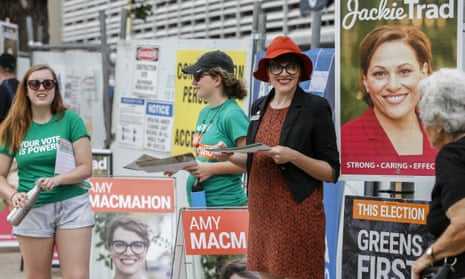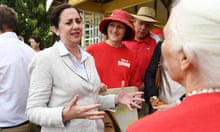Saturday night’s Queensland election result certainly wasn’t simple. A surge in One Nation support shook up the electoral map, but it didn’t translate into a large number of seats for the resurgent minor party. The Labor government is likely to hold on to power, but it wasn’t able to claim a neat victory on election night. Both major parties gained seats and lost seats, with regional differences in the results.
Labor is likely to win a majority and form government, although this is not certain. At the time of writing, the party appears to have won 44 seats, with the party in with a shot at winning a further 10. Wins in three of these seats would give them a majority.
Even if Labor were to fall short of a majority, a hung parliament wouldn’t necessarily be dominated by rightwing minor parties like Katter’s Australian party or One Nation. The seat of Maiwar looks set to go to either the Greens or Labor, and there are independents with a good chance of winning in Noosa and Rockhampton. These crossbenchers would likely help Labor govern if they fall short.
The LNP has no prospect of winning a majority: even if all of the remaining seats went their way, they would fall five seats short of a majority. The party’s vote dropped by 8.3%, while Labor only suffered a small 1.4% swing, with most of the One Nation surge hitting strong LNP areas. While it may be premature to call Labor a winner, the LNP was a clear loser.
There was a divergence in voting patterns between the suburbs of south-east Queensland and the other regions, with the One Nation vote being the biggest factor. One Nation polled around 7.5% in Brisbane and the Gold Coast, but managed over 15% in every other region. Both major parties suffered bigger swings outside the south-east.
The Labor vote only dropped by 0.7% in Brisbane, and actually went up on the Gold Coast. The swing against the LNP was bigger, losing 8.3% in Brisbane and the Sunshine Coast and 1.8% on the Gold Coast, but this compares to double-digit swings in other parts of south-east Queensland and the far north of the state. The Greens vote surged by 2.4% across Brisbane and by 2% on the Gold Coast, while going up by less than 1% in other areas.
Despite this trend, and the threat of One Nation, Labor still held most of its regional seats. It has held all three Cairns-area seats, and could still hold all three Townsville-area seats, as well as seats like Keppel, Mackay and Gladstone. But the party did better in the south-east, gaining Aspley and Redlands and in with a chance in Bonney and Caloundra.
One Nation polled a substantial 14% with candidates in only two-thirds of seats, but they won’t win a large number of seats. The party is currently in second place in 23 seats, but hasn’t managed to top the primary vote in any seat, so they will rely on preferences to win. In most of these seats, they won’t gain anywhere near enough of those preferences.
The party is yet to definitively win a single seat, although there are four seats where they have a shot. The party will likely end up in a similar position to Katter’s Australian party, with a small number of seats on a growing crossbench.
The system of single-member electorates used across Australia makes it hard for minor parties to win seats, and that system has hurt One Nation in this election, but a 14% vote is not insubstantial – it would be enough for One Nation to regain Malcolm Roberts’ Senate seat at the next election.
The Greens have long suffered under the same system which hindered One Nation, polling a substantial vote and never winning any seats. The Queensland Greens seem to have learned the lessons of campaigns in inner city Melbourne and Sydney, focusing their resources and attention on a small handful of seats. The party has benefited with large swings in three inner-city electorates, as well as generally gaining larger swings in Brisbane and the Gold Coast than in the rest of the state.
While the Greens polled higher in races against Labor in South Brisbane and McConnel, their best chance appears to be in the three-cornered contest of Maiwar. The Greens lead Labor by 145 votes in Maiwar, with LNP shadow treasurer Scott Emerson topping the primary vote with almost 41%. If the Greens can stay in second place, they will likely defeat Emerson with Labor preferences. If Labor overtakes the Greens, they will win.
Whether or not the Greens win, they are in a much stronger position than they have ever been before to win inner-city electorates, with three seats where they are only a few percentage points away from winning. Labor won’t be comfortable with how close the Greens came to defeating two of their senior ministers.
The growth in support for the Greens and the resurgence of One Nation both contributed to a much more complicated and messy election. No longer are elections in Australia simply about a contest between Labor and the coalition (in this case the LNP). Candidates outside the major parties are currently polling in the top two in almost one third of seats in Queensland, and there are numerous seats where it’s not clear who has come in the top two. At last year’s federal election, less than 90% of seats ended up as races between Labor and the Coalition.
This fragmentation certainly makes elections more interesting, and has made space for more diverse voices in parliament and in the electoral process, even if it’s made life harder for those predicting and analysing the result.






